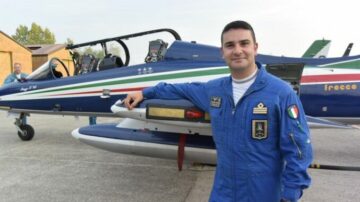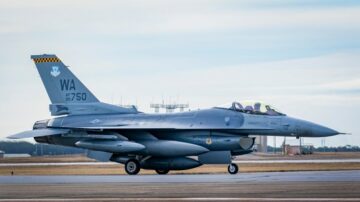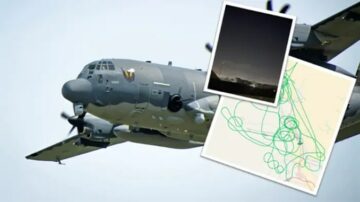
Take a look at these detailed photographs of the XB-70 Valkyrie’s interior.
The iconic North American XB-70 Valkyrie was the most ambitious super-bomber project of the Cold War. The massive six-engine bomber was slated to be the ultimate American high-altitude, high-speed, deep-penetration manned nuclear bomber designed to fly high and fast, so as to be safe from Soviet interceptors. In the end, it had a very short career, but it became the largest and heaviest airplane ever to fly at Mach 3.
As we have explained in several articles on the XB-70 we have published here at The Aviationist, two Valkyrie prototypes were been built by North American Aviation before the Kennedy Administration cancelled the program as a consequence of the doubts that surrounded the future of manned bombers, believed to be obsolete platforms to face the threat posed by Soviet SAMs (Surface-to-Air Missiles) to high-flying strategic bombers. Moreover, in low-level penetration role, the B-70 offered little performance improvement over the B-52 it was designed to replace (…) and it was much more expensive with shorter range.
More than 50 years after its last flight, the only remaining XB-70 Valkyrie is among the highlights on display at the National Museum of the U.S. Air Force at Wright-Patterson AFB in Dayton, Ohio. Last month, the Museum social media team published some really stunning photos of the aircraft on FB.
Some fascinating variants of the aircraft were proposed: some envisaged the B-70 carrying an Alert Pod, or flying as a Supersonic Refueler or as a Recoverable Booster Space System (RBSS).
 100vw, 706px” data-recalc-dims=”1″></a><figcaption id=) The impressive inline 6-engine configuration of the XB-70.
The impressive inline 6-engine configuration of the XB-70.The B-70 program was canceled in 1961 and development continued as part of a research program to study the effects of long-duration high-speed flight with the two XB-70A.
 100vw, 706px” data-recalc-dims=”1″></a><figcaption id=) Gauges.
Gauges.XB-70A number 1 (62-001) made its first flight from Palmdale to Edwards Air Force Base, CA, on Sept. 21, 1964. The second XB-70A (62-207) made its first flight on Jul. 17, 1965. The latter differed from the first prototype for being built with an added 5 degrees of dihedral on the wings as suggested by the NASA Ames Research Center, Moffett Field, CA, wind-tunnel studies.
 100vw, 706px” data-recalc-dims=”1″></a><figcaption id=) The switch to fold the wing tips can be seen in this photo.
The switch to fold the wing tips can be seen in this photo.While the 62-001 made only one flight above Mach 3, because of poor directional stability experienced past Mach 2.5, the second XB-70, achieved Mach 3 for the first time on Jan. 3, 1966 and successfully completed a total of nine Mach 3 flights by June on the same year.
 100vw, 706px” data-recalc-dims=”1″></a><figcaption id=) The Valkyrie cockpit.
The Valkyrie cockpit.A joint agreement signed between NASA and the Air Force planned to use the second XB-70A prototype for high-speed research flights in support of the American supersonic transport (SST) program.
 100vw, 706px” data-recalc-dims=”1″></a><figcaption id=) The throttles.
The throttles. 100vw, 706px” data-recalc-dims=”1″></a><figcaption id=) The nose ramp switch used to change the nose configuration for subsonic and supersonic flight.
The nose ramp switch used to change the nose configuration for subsonic and supersonic flight. 100vw, 575px” data-recalc-dims=”1″></a><figcaption id=) The cockpit door.
The cockpit door.However, on June 8, 1966, the XB-70 62-207 was involved in one of the most famous and tragic accidents in military aviation when it collided with a civilian registered F-104N while flying in formation as part of a General Electric company publicity photo shoot (involving a T-38 Talon, an F-4B Phantom II, and a YF-5A Freedom Fighter.) over Barstow, California, outside the Edwards Air Force Base test range in the Mojave Desert. Research continued with XB-70A number 1 prototype, with a first NASA flight on April 25, 1967 and the last one on Feb. 4, 1969.
 100vw, 706px” data-recalc-dims=”1″></a><figcaption id=) Control yoke.
Control yoke. 100vw, 706px” data-recalc-dims=”1″></a><figcaption id=) RIght hand side of the cockpit.
RIght hand side of the cockpit.
Source: https://theaviationist.com/2021/07/16/xb-70-close-up-images/
- "
- 7
- 9
- Agreement
- Air Force
- aircraft
- Airplane
- All
- American
- among
- April
- articles
- Australia
- avatar
- aviation
- blogs
- Books
- california
- canceled
- Career
- carrying
- change
- company
- Crime
- Defense
- Development
- editor
- Electric
- Engineering
- Europe
- Face
- FAST
- First
- first time
- flight
- Flights
- founder
- Freedom
- freelance
- future
- General
- General Electric
- graduate
- here
- High
- HTTPS
- Including
- industry
- Intelligence
- involved
- IT
- Italy
- journalist
- major
- Media
- Military
- Nasa
- North
- nose
- Ohio
- Others
- performance
- phantom
- pilot
- Planes
- Platforms
- poor
- private
- Program
- project
- Ramp
- range
- research
- safe
- Short
- So
- Social
- social media
- Space
- Stability
- Strategic
- studies
- Study
- support
- Switch
- Syria
- system
- test
- The Future
- time
- tips
- top
- transport
- u.s.
- U.S. Air Force
- View
- war
- Wing
- worldwide
- year
- years



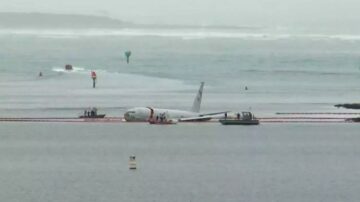

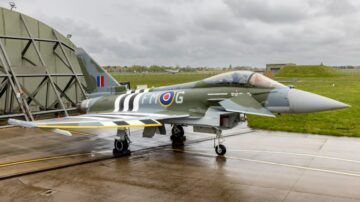
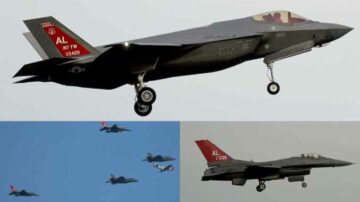
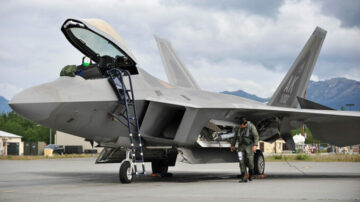

![[Updated] Five U.S. Marines Dead In CH-53E Helicopter Crash](https://platoaistream.net/wp-content/uploads/2024/02/updated-five-u-s-marines-dead-in-ch-53e-helicopter-crash-360x202.jpg)
